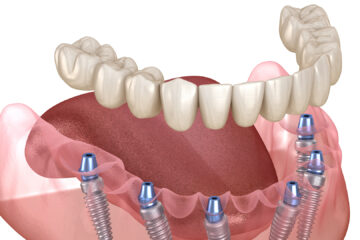Buying a used RV can be a fantastic way to enter the world of recreational travel without the high cost of a new model. However, it’s crucial to thoroughly inspect the RV before making a purchase to avoid unexpected problems and ensure you’re getting good value for your money. Here’s a comprehensive guide to help you inspect before you Buy Used RV:
1. Research the RV’s History
Vehicle History Report: Obtain a vehicle history report using the RV’s VIN (Vehicle Identification Number). This report can reveal any past accidents, title issues, or odometer discrepancies.
Maintenance Records: Request maintenance records from the seller. Well-maintained RVs are likely to be in better condition, and detailed records can provide insight into past repairs and servicing.
2. Check the Exterior
Roof and Seals: Inspect the roof for any signs of damage or leaks. Check the condition of seals around windows, doors, and vents. Look for any cracks or deterioration that could lead to leaks.
Walls and Siding: Examine the exterior walls and siding for any signs of damage, such as dents, cracks, or bubbling paint. Look for evidence of water damage, which can be indicated by discoloration or warping.
Underbody and Chassis: Inspect the underbody and chassis for rust, corrosion, or damage. Pay close attention to the condition of the frame, suspension, and tires.
Awning and Exterior Features: Check the condition and functionality of the awning. Ensure that it rolls out and retracts smoothly. Inspect other exterior features like storage compartments and exterior lighting for any damage or malfunctions.
3. Examine the Interior
General Condition: Assess the overall cleanliness and condition of the interior. Look for signs of wear and tear on furniture, flooring, and walls.
Cabinets and Storage: Open and close all cabinets, drawers, and storage compartments to ensure they function properly. Check for any signs of damage or mold inside the cabinets.
Flooring: Inspect the flooring for any damage, such as scratches, stains, or soft spots. Check for signs of water damage, especially around the edges and near appliances.
Upholstery: Examine the upholstery on furniture and bedding for stains, tears, or excessive wear. Check if the cushions and mattresses are comfortable and in good condition.
4. Test the Systems
Plumbing System: Test all faucets, showers, and toilets to ensure they are functioning properly. Check for any leaks or water pressure issues. Inspect the water heater and water pump for signs of wear or malfunction.
Electrical System: Test all electrical systems, including lights, outlets, and appliances. Ensure that the RV’s battery and generator are working correctly. Test the RV’s shore power connection and any electrical hookups.
HVAC System: Check the heating, ventilation, and air conditioning (HVAC) systems for proper operation. Test both the air conditioning and heating systems to ensure they are functioning efficiently.
Propane System: Inspect the propane system, including tanks, lines, and appliances. Test the stove, oven, and refrigerator to ensure they operate correctly on propane. Look for any signs of leaks or corrosion.
5. Examine the Engine and Mechanical Components (For Motorhomes)
Engine Condition: Check the engine for signs of leaks, corrosion, or excessive wear. Look at the oil level and condition, and check for any unusual noises during operation.
Transmission and Brakes: Test the transmission for smooth shifting and ensure that the brakes are responsive and free from noise. Examine the brake pads and rotors for wear.
Tires: Inspect the tires for tread wear and damage. Check the tire pressure and look for any signs of uneven wear, which could indicate alignment issues.
6. Test Drive the RV
Driving Experience: Take the RV for a test drive to assess its overall performance. Pay attention to how it handles, accelerates, and brakes. Test the steering and check for any unusual vibrations or noises.
Functionality Check: During the drive, test the RV’s systems such as the cruise control, headlights, turn signals, and windshield wipers. Ensure that all gauges and indicators are functioning properly.
7. Consult a Professional
Pre-Purchase Inspection: Consider hiring a professional RV inspector to conduct a thorough pre-purchase inspection. An experienced inspector can identify potential issues that may not be immediately visible and provide a detailed report.
Expert Advice: If you’re not familiar with RV systems or maintenance, seeking advice from a mechanic or RV expert can help you make a more informed decision and avoid costly repairs.
8. Negotiate and Finalize the Purchase
Negotiate the Price: Use the findings from your inspection to negotiate the price. Point out any issues or needed repairs that could justify a lower offer.
Review the Paperwork: Carefully review all purchase documents, including the sales contract, warranty information, and title transfer paperwork. Ensure that everything is accurate and complete before finalizing the purchase.
Conclusion
Inspecting a used RV thoroughly before purchasing is essential to ensure you’re making a sound investment. By carefully examining the exterior and interior, testing all systems, and considering professional help, you can identify potential issues and make an informed decision. With proper due diligence, you can enjoy your RV adventures with confidence and peace of mind.




